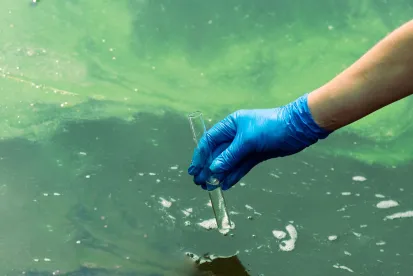On August 29, 2023, the Environmental Protection Agency (EPA) and US Army Corps of Engineers (USACE) released an updated and final rule amending the previous “waters of the United States” (WOTUS) definition to conform to the Supreme Court’s May 25, 2023, decision in Sackett v. Environmental Protection Agency. The Sackett decision was monumental in that it rejected the seventeen-year-old “significant nexus” test from Rapanos v. United States and instead authored a new test – the “continuous surface connection” test – to determine what wetlands constitute WOTUS subject to the Clean Water Act (CWA). Although EPA and USACE had previously promulgated its own rule earlier in the year attempting to define WOTUS, the Sackett decision rendered certain aspects of the rule invalid, requiring an amendment to the rule’s key components. In an unforeseen twist, the amended rule published this week will not go into effect in 27 states that joined a lawsuit challenging the Biden administration’s WOTUS rule earlier this year. In those 27 states, the EPA and USACE will apply a potentially broader WOTUS definition, meaning projects in those states will potentially be subject to increased permitting requirements until the litigation is resolved.
As expected, the amended rule implements Sackett’s continuous surface connection test and clarifies that when identifying federally jurisdictional wetlands, “adjacent” shall mean “having a continuous surface connection,” indicating that the CWA no longer covers adjacent wetlands, only adjoining wetlands, for WOTUS purposes. The new rule also completely removes the significant nexus test and any language pertaining to the “relatively permanent” standard, further cementing how jurisdictional determinations will be made in the future. Under this new rule, wetlands are now only considered to be WOTUS, or jurisdictional, if they are “relatively permanent, standing or continuously flowing bodies of water,” and “have a continuous surface connection to those waters.” Jurisdictional categories like “interstate waters” have also been revised to clarify that interstate wetlands are no longer considered interstate waters, and “wetlands” and “streams” are no longer considered “additional waters.” Additionally, EPA states the rule will not impact the “longstanding activity-based permitting exemptions” provided to the agricultural community through the CWA.
This new rule is final and will be taking effect immediately upon publication in the Federal Register, bypassing the traditional public notice and comment period required under the Administrative Procedure Act for most rule-making activity. EPA and USACE state they have “good cause” to do so, namely that the changes “do not involve the exercise of the agencies’ discretion” or “impose any burdens on the regulated community.” We expect the decision to utilize this exception and bypass the traditional process to be challenged (along with other parts of the rule). To make matters more complicated, due to ongoing litigation regarding the previous version of this rule, once published, the new rule will only take effect in the 23 states (plus Washington, D.C., and U.S. Territories) that are not a party to current lawsuits challenging the previous version of the rule. The other 27 states will continue to use the definition of WOTUS consistent with pre-2015 regulatory guidance and the Sackett decision while waiting for the resolution of their lawsuits. It is unclear how EPA and USACE will blend both the pre-2015 WOTUS regulatory guidance and the Sackett decision together, likely resulting in a gray area until the first few determinations are made. One potential outcome is that in the 27 states challenging the Biden administration’s previous version of the rule, the definition of WOTUS will be broader, resulting in increased permitting requirements for projects in those states compared to projects in the 23 states that did not challenge the previous Biden WOTUS rule. For this reason, projects in any of these 27 states need to be aware of the possible implications this could cause and stay on top of both future case updates and decisions regarding wetland determinations.
Although certain aspects of this newly amended rule are muddy, what’s clear is that its impact will be extraordinary – many wetlands that were potentially covered under the CWA may no longer be covered, meaning those in the development, construction, mining, and energy industries who may have needed to acquire a Section 404 permit to impact federally protected wetlands may no longer need to do so.




 />i
/>i

